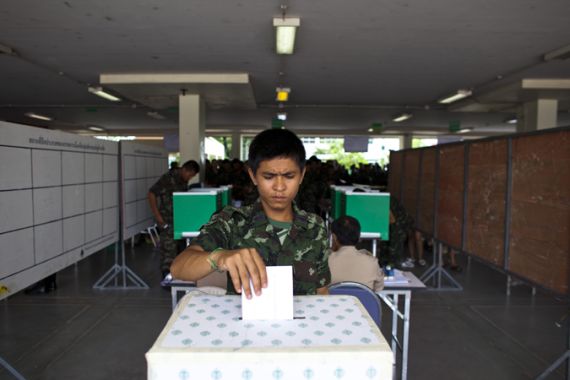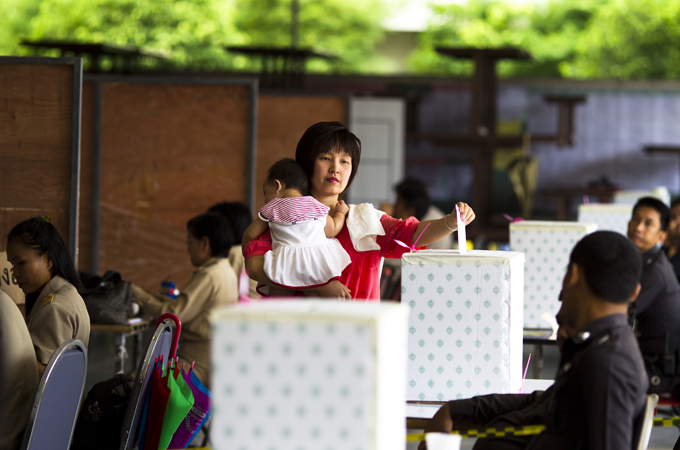Explainer: Thailand’s election system
Thais vote on Sunday hoping to elect a stable government, but the new parliament’s ability to form coalition is crucial.

 |
| Near 47 million Thais will vote on Sunday at 557 polling stations across the country [GALLO/GETTY] |
On July 3 Thailand will hold its 26th elections since it became a democracy in 1932, ending seven centuries of absolute monarchy.
It has since been governed by 17 constitutions and experienced 18 military coups – actual and attempted. The latest coup was in 2006, which overthrew Thaksin Shinawatra, the telecoms tycoon and then-prime minister, and his Thai Rak Thai party (TRT).
The TRT’s most recent incarnation is the Pheu Thai Party, formally led by Thaksin’s youngest sister Yingluck Shinawatra as the party list candidate.
TRT is the only Thai political party to win a second term in office as a result of landslides in 2001 and 2005. The party was dissolved for electoral fraud after the 2006 coup. Following the dissolving the Puea Thai Party was formed and it is an incarnation of the old TRT. The new Puea Thai Party remains under Thaksin’s control despite his living in exile.
Forty-seven million citizens, of the southeast Asian country’s near 67 million, people, are eligible to vote. Voter turnout has been relatively high, at 74.5 per cent in 2007, 60 per cent in 2005 and 70 per cent in 2001.
Forty-two political parties have signed up to take part in Sunday’s elections, and 3,735 candidates have registered to compete to be elected to a four-year term.
Five hundred seats are up for grabs, 20 more than the 2007 elections.
There will be 375 constituency seats available fromf 76 provinces, and Bangkok, the capital, will have a quota of 33 of those seats. The remaining 125 seats will be decided by the party list vote.
In the last 2007 elections, 7 parties won parliamentary seats.
There are about 557 polling stations set up across the country and some 2.6 million people have applied to cast their votes in advance. Voters will tick two boxes on ballots, one for preferred constituency and candidate and another for preferred party on national level.
Party list seats will be decided via a system of party-proportional representation, which is determined by the percentage of votes each party gets in the second category. Each party has nominated a list of candidates for their party list quotas Nada there is no longer a minimum percentage required to win these 125 seats.
Voting will take place from 8 am to 3 pm (local time). Results will be announced from each constituency and a clear indication of which party will finish first, should be known by about 8 pm (local time).
According to the 2007 constitution, the new parliament must convene within 30 days of the poll to select a house speaker. Then there is another 30 days in which to hold a vote on who will become prime minister. But the entire process is normally completed within one month of the elections.
In the event that no party wins a majority of more than 250 seats the party with most seats or a plurality, will be given first chance to form a coalition government with other parties.
If the party that wins a plurality is unable to form a coalition, the second-placed party gets a chance.